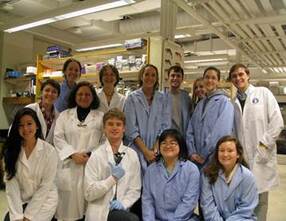EGI’s vision is to produce glyphosate-free shrimp by using non-genetically modified soybeans in aqua feeds - to address concerns of emerging chronic diseases and public health issues worldwide. We will provide the shrimp aquaculture industry a differential diagnostic tool useful for international trade certification and regulation by the Office of International Epizootics
1. to assess the safety of seafood in both commodity and wild shellfish and fish sold in supermarkets of the USA and other countries – to provide criteria for certification of organic- and healthy-seafood products.
2. to apply One Health epigenetic epidemiology tools to assess the safety of seafood and food security risks – to protect our great grand-children from glyphosate-contaminated seafood (transgenerational toxicology research).
3. to conserve wild shrimp populations throughout their natural range, from northern Peru to Northern Mexico, by supporting research on cryopreservation of germ cells and population (epi)genetic studies.
4. to educate the public and government officials about the potential adverse health effects to the environment, wildlife, pets, livestock, pregnant women and children caused by contaminants of concern (COCs), hormone disrupting chemicals (EDCs) like metals and persistent organic pollutants (PCBs, PAHs), microbial transgene-based pesticides, Bacillus thuringiensis-based products used to control mosquitoes, Vibrios containing plasmids with insect-like PirAB endotoxins - with functions similar to those of B. thuringiensis Cry toxins, and antimicrobials such as the herbicide Glyphosate and others.
2. to apply One Health epigenetic epidemiology tools to assess the safety of seafood and food security risks – to protect our great grand-children from glyphosate-contaminated seafood (transgenerational toxicology research).
3. to conserve wild shrimp populations throughout their natural range, from northern Peru to Northern Mexico, by supporting research on cryopreservation of germ cells and population (epi)genetic studies.
4. to educate the public and government officials about the potential adverse health effects to the environment, wildlife, pets, livestock, pregnant women and children caused by contaminants of concern (COCs), hormone disrupting chemicals (EDCs) like metals and persistent organic pollutants (PCBs, PAHs), microbial transgene-based pesticides, Bacillus thuringiensis-based products used to control mosquitoes, Vibrios containing plasmids with insect-like PirAB endotoxins - with functions similar to those of B. thuringiensis Cry toxins, and antimicrobials such as the herbicide Glyphosate and others.






